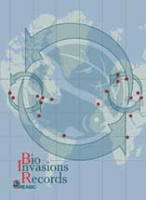
BioInvasions Records
Scope & Guideline
Advancing knowledge on the ecological impacts of invasive species.
Introduction
Aims and Scopes
- Documentation of Non-Native Species:
The journal publishes detailed records of non-native species across various ecosystems, contributing to a comprehensive understanding of their distribution and establishment. - Impact Assessment:
Research articles often evaluate the ecological, economic, and social impacts of invasive species, providing critical insights into the consequences of biological invasions. - Management and Control Strategies:
The journal includes studies that discuss strategies for managing invasive species, including prevention, control, and eradication methods. - Genetic and Ecological Studies:
BioInvasions Records emphasizes interdisciplinary approaches, including genetic analyses and ecological studies, to understand the mechanisms behind species invasions. - Citizen Science Contributions:
The journal encourages contributions from citizen science initiatives, highlighting the role of public participation in monitoring and reporting invasive species.
Trending and Emerging
- Emerging Invasive Species:
There is an increasing emphasis on documenting newly discovered invasive species, particularly in previously unreported regions, highlighting the need for continuous monitoring. - Molecular Techniques in Invasion Biology:
The use of molecular methods, such as DNA barcoding and genetic analyses, is trending, allowing researchers to identify invasive species more accurately and understand their genetic diversity. - Invasive Species and Ecosystem Services:
Research is increasingly focusing on the implications of invasive species for ecosystem services, examining both negative impacts and potential benefits in modified ecosystems. - Public Engagement and Citizen Science:
The integration of citizen science into invasion biology is becoming more prominent, with studies showcasing how public participation aids in data collection and monitoring of invasive species. - Climate Adaptation Strategies:
Emerging studies are beginning to explore how invasive species management can align with broader climate adaptation strategies, indicating a growing recognition of the interconnectedness of these issues.
Declining or Waning
- Aquaculture Impacts:
Research focusing on the impacts of invasive species in aquaculture settings has decreased, possibly due to a saturation of existing knowledge or a shift towards terrestrial and freshwater invasions. - Invasive Species and Climate Change Interactions:
While still relevant, the direct exploration of climate change as a driving factor for invasion dynamics seems to be waning, as researchers may be focusing more on specific case studies rather than broad assessments. - Traditional Taxonomy of Invasive Species:
The emphasis on traditional taxonomic descriptions of newly introduced species is less frequent, as there is a growing preference for genetic and ecological approaches to understand invasions. - Invasive Species in Urban Environments:
There appears to be a decline in studies specifically targeting the impacts of invasive species in urban settings, as researchers may be prioritizing rural or natural ecosystems where invasions have more significant impacts.
Similar Journals

CAHIERS DE BIOLOGIE MARINE
Illuminating the Secrets of Ocean EcosystemsCAHIERS DE BIOLOGIE MARINE, published in France, is a distinguished journal in the field of Aquatic Sciences, known for its interdisciplinary exploration of marine biological research. With ISSN 0007-9723 and E-ISSN 2262-3094, it has served as a vital platform for disseminating scientific knowledge since its inception in 1992. The journal is indexed in Scopus, where it currently holds a position of rank #172 out of 247 in the Aquatic Science category, landing in the 30th percentile, reflecting its commitment to quality research in the domain. Although it operates as a traditional access journal, CAHIERS DE BIOLOGIE MARINE encourages scholarly contribution from both emerging and established researchers, making significant strides in understanding marine ecosystems and biota. As such, it remains an essential resource for professionals and students aiming to contribute to the growing body of knowledge in aquatic sciences.
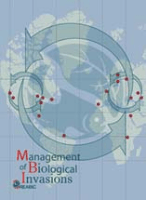
Management of Biological Invasions
Empowering Researchers to Combat Invasive SpeciesManagement of Biological Invasions, published by the Regional Euro-Asian Biological Invasions Centre (REABIC), is a prominent open access journal that has been contributing to the field of ecological science since its inception in 2010. With an ISSN of 1989-8649 and a commendable presence in various ranking categories, it maintains a Q2 ranking in Ecology and Ecology, Evolution, Behavior and Systematics, as well as a Q3 ranking in Management, Monitoring, Policy and Law. This journal is vital for researchers, professionals, and students focused on understanding and managing biological invasions, a pressing issue that affects biodiversity and ecosystem health globally. Operating from Finland, “Management of Biological Invasions” fosters innovative research and facilitates discourse on management strategies through its rigorous peer-review process and dynamic publication schedule, ensuring accessibility for the academic community. As it converges years from 2010 to 2024, the journal continues to serve as a key platform for disseminating knowledge that informs policy, supports ecological resilience, and ultimately guides sustainable management practices.
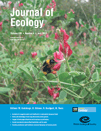
JOURNAL OF ECOLOGY
Unraveling the complexities of ecological interactions.JOURNAL OF ECOLOGY, published by Wiley, stands as a leading publication in the field of ecology, evolution, behavior, and plant science, currently positioned in the prestigious Q1 quartile across these categories. Established in 1976, the journal has consistently provided a platform for innovative research and critical discourse related to ecological patterns, processes, and interactions. With its robust Scopus ranking—31st out of 721 in Ecology, Evolution, Behavior and Systematics, and 26th out of 516 in Plant Science—this journal notably reflects the high impact and influence of its articles in the scientific community. Although it does not offer open access options, the journal ensures comprehensive dissemination of pivotal findings to researchers, professionals, and students alike. Located in the United Kingdom at 111 River St, Hoboken, NJ, the JOURNAL OF ECOLOGY remains an essential resource for those dedicated to advancing our understanding of ecological systems and their complexities.
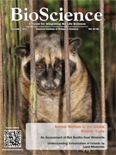
BIOSCIENCE
Unlocking innovative research for a sustainable future.BIOSCIENCE, published by Oxford University Press, is a leading journal in the field of Agricultural and Biological Sciences, recognized for its rigorous peer-reviewed articles and innovative research contributions. With an impressive impact factor that places it in the Q1 quartile of its category, BIOSCIENCE ranks #7 out of 221 journals in its field, representing the top 3% of publications based on Scopus data. Since its inception in 1972, it has provided a platform for the dissemination of knowledge and advancement in various biological domains, making it an essential resource for researchers, professionals, and students dedicated to the life sciences. The journal does not currently offer open access options, yet its comprehensive coverage—from cellular biology to ecosystem dynamics—ensures it remains a pivotal reference for ongoing biological studies and developments. Readers can find its latest issues through the ISSN 0006-3568 or E-ISSN 1525-3244, ensuring broad accessibility to its impactful content.
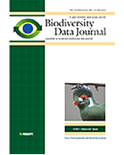
Biodiversity Data Journal
Empowering research with comprehensive biodiversity insights.Biodiversity Data Journal, published by PENSOFT PUBLISHERS, is a leading open-access platform that has been facilitating the dissemination of scientific knowledge since its inception in 2013. With a focus on enriching the fields of Agricultural and Biological Sciences, Animal Science and Zoology, Ecology, and Plant Science, this journal plays a pivotal role in promoting research outputs related to biodiversity, encompassing ecological data, species inventories, and conservation strategies. It has achieved commendable rankings in various categories, notably securing a Q2 rating in several key areas, indicating its growing influence within the academic community. The journal’s contribution to advancing the understanding of biodiversity is further enhanced by its commitment to open access, ensuring that vital research findings are widely accessible to researchers, professionals, and students worldwide. By publishing comprehensive datasets and innovative research, the Biodiversity Data Journal remains an essential resource for those looking to stay at the forefront of biodiversity science and environmental stewardship.

JOURNAL OF CAVE AND KARST STUDIES
Pioneering Insights into Geological MarvelsJOURNAL OF CAVE AND KARST STUDIES, published by the NATIONAL SPELEOLOGICAL SOCIETY, stands as a leading academic platform dedicated to advancing knowledge in the field of cave and karst studies. Since its inception in 1996, this journal has consistently provided high-quality research articles that explore the geological, biological, and hydrological processes associated with these unique environments. With an impact factor that situates it in the Q3 category of Earth-Surface Processes, indexed by Scopus, it ranks 97th out of 179 journals in this domain, reflecting its contribution to the field. Although open access is not currently offered, the journal's rigorous peer-review process ensures scholarly integrity and quality. Researchers, professionals, and students around the globe are encouraged to engage with the journal for the latest insights and breakthroughs, fostering a greater understanding of cave and karst ecosystems. For more information, please refer to their address in Huntsville, AL, or visit their official website for submissions and guidelines.

Ecological Solutions and Evidence
Innovative solutions for a sustainable future.Ecological Solutions and Evidence, published by WILEY, stands as a leading platform in the field of ecology, environmental science, and sustainability, with a commendable reputation starting from its inception in 2020. Operating under rigorous academic standards, this journal has achieved notable distinctions by securing a Q1 category ranking in Ecology, Management, Monitoring, Policy and Law, and Nature and Landscape Conservation, making it an invaluable resource for researchers seeking to address pressing environmental challenges. With a current impact factor reflective of its influential articles, the journal features an international scope, focusing on innovative solutions derived from empirical evidence. Accessible to a global audience, the journal encourages open discourse in the field, further supporting researchers, professionals, and students striving to foster ecological sustainability and informed policy-making. Published in the United Kingdom, it aims to bridge the gap between science and application in real-world contexts, promoting actionable insights and interdisciplinary collaboration.
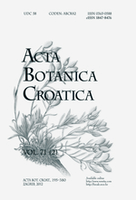
ACTA BOTANICA CROATICA
Shaping the Future of Ecology and Evolutionary StudiesACTA BOTANICA CROATICA is an esteemed interdisciplinary journal dedicated to the exploration and advancement of botanical sciences, published by UNIV ZAGREB, FAC SCIENCE, DIV BIOLOGY. Since its inception, this journal has embraced an Open Access model, enabling researchers and the global scientific community easy and unrestricted access to cutting-edge findings in plant biology, ecology, and evolutionary studies since 2011. Covering a broad spectrum from plant science to ecological and evolutionary behavior, ACTA BOTANICA CROATICA holds an important position in the academic landscape, currently classified in the Q3 quartile for both Ecology, Evolution, Behavior and Systematics and Plant Science categories. With a robust ranking in Scopus, it stands at #246 out of 516 in Plant Science and #360 out of 721 in Ecology, showcasing its commitment to quality research dissemination. The journal invites contributions from researchers, professionals, and students aiming to broaden the horizons of botanical research and foster collaboration within the scientific community.

Neotropical Biology and Conservation
Exploring the Rich Tapestry of Neotropical LifeNeotropical Biology and Conservation, published by Pensoft Publishers, serves as a pivotal platform for researchers and professionals dedicated to the understanding and preservation of biodiversity in the Neotropical region. This Open Access journal, operational since 2006 and based in Brazil, invites contributions that delve into the complexities of ecology, evolution, and conservation strategies pertinent to the diverse ecosystems of South and Central America. With a commendable 2023 impact factor reflected in its Q3 rankings across multiple categories including Animal Science, Ecology, and Plant Science, it stands as a valuable resource for academics seeking to publish innovative findings and foster dialogue in these critical areas of study. The journal's commitment to open access ensures that knowledge is readily available to anyone interested in advancing the field of neotropical biology and conservation. Join the global conversation and contribute to the vital work of preserving our planet’s rich biological heritage through rigorous research published in this esteemed journal.

Annual Review of Ecology Evolution and Systematics
Connecting Discoveries Across Ecological and Evolutionary LandscapesThe Annual Review of Ecology, Evolution, and Systematics, published by Annual Reviews, is a leading academic journal dedicated to advancing the understanding of ecological and evolutionary processes. With a commendable impact factor and impressive rankings—9th in both the Ecology, Evolution, Behavior and Systematics category and the Environmental Science category—this journal is recognized for its rigorous peer-reviewed articles that synthesize research findings across a wide range of topics within the fields of ecology and evolutionary biology. Established in 2003, this annual publication aims to provide researchers, professionals, and students with comprehensive insights into the latest developments and trends within these dynamic disciplines. By facilitating access to high-quality scholarly articles, the Annual Review of Ecology, Evolution, and Systematics continues to play a crucial role in fostering scientific discourse and discovery.